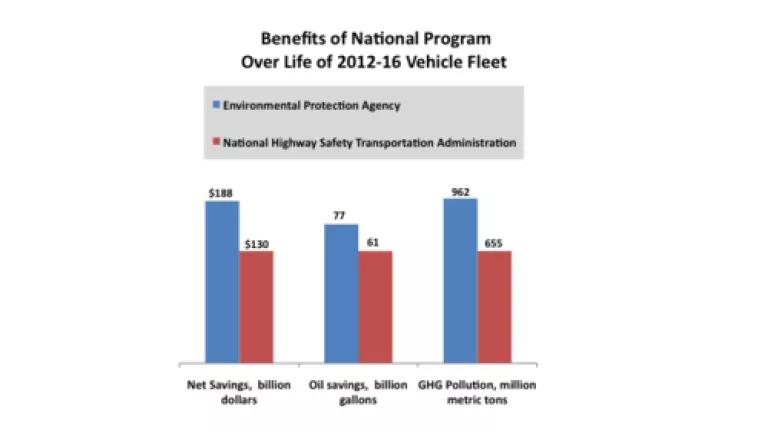
First, Fred Upton (R-Mich.) and Chairman of the House Energy and Commerce Committee, released the Committee's agenda to stop the EPA from setting carbon pollution standards -- an agenda that Doniger and I both blogged on. Now, as my colleague David Doniger blogged recently, Sen. Barrasso (R-WY) along with seven other Republican senators, introduced a bill that would bar the Environmental Protection Agency and every other arm of the federal government from setting any standard or safeguard to protect our health from the pollution that drives global warming.
One effect of the Barasso bill would be to hand over exclusive authority to the National Highway Safety Traffic Administration to set the next phase of passenger vehicle National Program Standards for model years 2017 and beyond.
As the first phase of the National Program demonstrates, leaving the next round of standards solely to the National Highway Safety Traffic Administration is a bad idea. The result would be higher consumer fuel bills, greater dependency on oil and more GHG pollution. The primary reasons are that the Environmental Protection Agency can set a stronger standard and more effectively enforce its program than the National Highway Safety Traffic Administration.
The National Program consists of two separate, but consistent programs, covering passenger vehicles built between 2012 and 2016. Over the lifetime of the vehicles sold during 2012-2016, the Environmental Protection Agency projects its GHG pollution program will save consumers $188 billion, reduce oil consumption by 75 billion gallons, and cut U.S. GHG pollution by 960 million metric tons. In contrast, the National Highway Safety Traffic Administration estimates its fuel economy program will result in fewer benefits: consumer savings of $130 billion, reduction in oil consumption of 61 billion gallons, and U.S. GHG pollution cut by 655 million metric tons. (see chart below)
The Environmental Protection Agency program results in much greater benefits - 45% more consumer savings, 26% more oil savings, and 47% more GHG pollution reductions.
The higher benefits are result of two key differences between the Clean Air Act and the Energy Policy Conservation Act.
First, under the Clean Air Act, the Environmental Protection Agency’s standards can incorporate reductions in pollution that can be achieved by air conditioning system improvements, such as switching to a less potent refrigerant and making the compressor run more efficiently. The National Highway Safety Traffic Administration, in contrast, has no statutory authority to include these very cost effective reductions.
Second, Energy Policy Conservation Act allows a manufacturer to pay a fine in lieu of meeting standards. That’s why some manufacturers, such as a Mercedes Benz, Porsche and Fiat, have for years exceeded the fuel economy standards, finding it cheaper to pay fines than make their cars more fuel efficient. In contrast, under the Clean Air Act, manufacturers must pay a penalty and stop selling vehicles until their fleet is in compliance.
Phase 1 of the National Program showed that the Environmental Protection Agency and National Highway Safety Traffic Administration can work together in a cooperate manner to develop a consistent program. Cutting the Environmental Protection Agency out of the game would hurt consumers’ pocketbooks, makes us more dependent on oil and result in greater GHG pollution.
[Correction February 16, 2010: My original blog had inadvertently switched the percent savings of the consumer benefits and oil savings. The correct numbers are now showed above.]]
